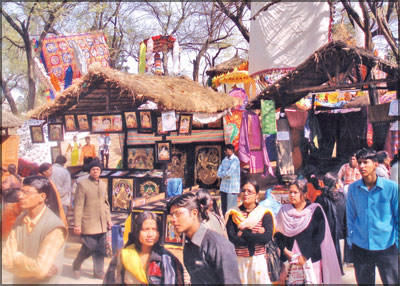Indian consumer goods industry resilient despite crisis - MTI
Study
MTI Consulting’ recent study on Indian FMCG sector indicates that the
overall demand is undeterred despite recent price hikes by FMCG firms.
Research indicates that the global economic slowdown has not impacted
the earnings of consumer goods industry in India. The FMCG sector grew a
double digit growth in the past nine months. The sector was expected to
touch USD 25 billion by December 2008 end as opposed to USD 20 billion
in 2007 despite the price increases.
During 2008 we saw retail prices of FMCG goods increasing by 10 per
cent in line with inflation at a 13-year-high and firms such as HUL,
Godrej and Marico met the rising input costs by raising prices. Due to
increased demand of consumer goods from the rural markets, the outlook
looks positive for firms in the quarters to come.
The price hikes have not yet affected the overall volumes of Indian
FMCG firms and the main reason for this is the major demand from the
rural and semi-urban markets, newer product lines and aggressive
promotions.

According to the Associated Chamber of Commerce and Industry of India
(ASSOCHAM), the rural market in India for FMCG products is growing much
faster than the urban market and is estimated to be around 25 per cent
of the overall market size and this aggressive penetration has led to a
30 per cent higher sales.
Steady revenue growth
Consumer spending for FMCG products remains robust in India and
industry majors such as Hindustan Unilever (HUL), ITC Ltd, Britannia
Industries, Colgate Palmolive, Nestle, Dabur and Marico have on an
average posted a sales growth of around 19 per cent in the third quarter
ending in December 2008. Overall the industry has been growing at a rate
of 17-20 per cent.
Strategies in Tough Times
Companies such as Marico have been following a strategy of
maintaining unit volume margin across most of its product lines.
Industry majors HUL and Marico are coming up with sales promotional
offers at least once or twice a year. Creating a healthy pipeline of new
products as additional sources of growth has been a popular trend seen
in the past one year.
HUL, Marico and Colgate Palmolive are pushing their products in the
rural/semi-urban markets with the introduction of special budgeted
products, lower priced packs which are helping them in terms of
maintaining their volumes growth.
Global FMCG major Nestle has announced plans to invest around USD 120
million in India in 2009 and these investments are expected to go into
new R&D, advertising and capacity building.
Improved product lines
Almost all major companies are coming up with novel product
categories and a common trend that was seen in the past few years was
that firms were introducing smaller packets of products (SKU’s) in food
and edible oil category.
The product lines have been skewed in terms of sizes which are making
inroads into the rural belts and the middle class homes, in turn seeing
larger volumes of sales in the foods division.
Advertising expenditure
There has been notable increase in the advertising and media costs of
the companies, with Godrej planning to increase its Advertising and
Branding costs by around 35 per cent in 2010.
According to Adexindia, the expenditure of FMCG companies has
increased by 18 per cent in 2008.
HUL spent 8.6 per cent of its net sales on advertising and promotions
this quarter.
Looking ahead
The rise of the per capita income in the rural regions due to the
higher farming output and government backed loans have fuelled the
consumer spending against the decreasing volumes and margins seen in the
urban region that is mainly affected by the financial turmoil and
economic slowdown.
In the coming years we see FMCG majors trying hard to tap this
blossoming demand from the rural and semi-urban markets of India by
revising product lines, introducing cheaper products and increasing
their distribution networks. |





